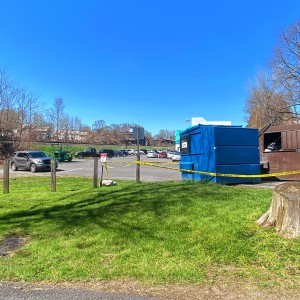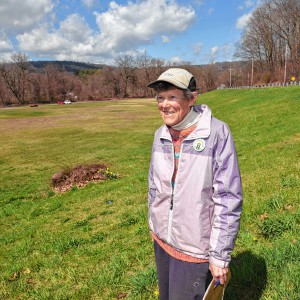My Turn: Antarctic Sea ice — going, going ...
| Published: 03-22-2023 5:06 PM |
Amid the deluge of political, war, and economic news, a new report from Antarctica caught my attention: Floating pack ice surrounding the frozen continent has shrunk to the smallest extent since monitoring by satellite began in 1979.
As reported in The Guardian online on March 4, the ice pack reached a record low of 1.79 million square kilometers on Feb. 25 — about 9% lower than previous February levels. According to Australian scientists Rob Massom and Phil Reid, “two-thirds of the continent’s coastline was exposed to open water last month.”
Sixty years ago as a newly minted ensign, I spent four months in Antarctica aboard a Navy icebreaker bashing channels for cargo ships to reach McMurdo Sound and other research stations on the continent. After leaving New Zealand and crossing the stormy “Roaring Forties” and “Furious Fifties,” we entered a vast ocean of pack ice 500 miles wide.
For three weeks we pounded through ever-heavier ice until we became totally stuck within view of the ice-sheathed volcano Mount Erebus, still 50 kilometers from McMurdo. As described in my journal: “We’ve been stuck for thirty hours during which we’ve heeled and trimmed the ship, swung our heavier boats out on cranes, hauled against ice anchors, exploded dynamite charges near the bow, all to no avail.”
Thanks to our six engines and a strongly built hull, we avoided being crushed like Shackleton’s “Endurance” and finally wriggled loose.
A couple of months later, while conducting oceanographic research along the vast white cliff front of the Ross Ice Shelf, a lookout spotted debris spilling out of a great tabular iceberg that had broken away from the shelf. On closer inspection, the debris was found to be the remains of wooden buildings crushed beneath 10 tons of ice.
Photographs from our ship later appeared in Life Magazine and the wreckage was identified as part of Admiral Richard Byrd’s “Little America IV” base built on the Ross Ice Shelf in the 1940s — a relic of the heroic age of Antarctic exploration, but in retrospect also an omen of the age of climate change yet to come.
Who could then imagine that the immense expanse of pack ice that we struggled through for weeks would largely disappear within a single human lifetime?
Article continues after...
Yesterday's Most Read Articles
 Greenfield man arrested in New York on murder charge
Greenfield man arrested in New York on murder charge
 Man allegedly steals $100K worth of items from Northampton, South Deerfield businesses
Man allegedly steals $100K worth of items from Northampton, South Deerfield businesses
 Greenfield Police Logs: April 9 to April 17, 2024
Greenfield Police Logs: April 9 to April 17, 2024
 Former Leyden police chief Daniel Galvis charged with larceny
Former Leyden police chief Daniel Galvis charged with larceny
 Shea Theater mural artist chosen out of 354 applicants
Shea Theater mural artist chosen out of 354 applicants
 Millers Meadow idea would ‘completely transform’ Colrain Street lot in Greenfield
Millers Meadow idea would ‘completely transform’ Colrain Street lot in Greenfield
While the “greenhouse effect” was vaguely recognized at the time, no one realized that atmospheric carbon dioxide, a driver of global warming, was already at the “elbow” of the famous “hockey stick” model, as formulated in 1999 by UMass climatologist Ray Bradley and his colleagues. In 1963, atmospheric CO2 stood at about 318 parts per million, a slight increase from the millennia-long, pre-industrial average of 280 ppm.
CO2 levels have since leaped upward to an appalling 419 ppm today — the highest level since 3 million years ago, when the world was 3 to 4 degrees Celsius hotter than today. As David Wallace-Wells wrote in “The Uninhabitable Earth,” (2017): “The last twenty-five years of emissions … is about half of the total humanity has ever produced — a scale of carbon production that has pushed the planet from near-complete climate stability to the brink of chaos.”
The melting of sea ice per se does not directly raise sea level significantly since that ice is already largely immersed in the ocean. But as studied by another distinguished UMass climatologist, Rob DeConto and his team, the loss of protective floating ice causes the seaward edge of land-based glaciers to be thawed by warming ocean water, leading to faster melting of land ice and sea level rise.
Polar surface air temperatures are rising at more than double the global average over the last two decades, as amplified by feedbacks from loss of sea ice and snow cover, and melting of permafrost. As reported daily, climate change is driving more intense and costly disasters including prolonged drought, devastating wildfires, stronger hurricanes, coastal and river flooding, and extreme temperatures.
Climate change also threatens food and water supplies around the world through changes in precipitation and rising temperatures. Climate impacts will most heavily burden those who already suffer from food shortages, environmental degradation, and deficient housing.
We have had plenty of warning: In 1992, 1,700 scientists, including 104 Nobel Laureates, signed a “World Scientists’ Warning to Humanity” that declared: “Human beings and the natural world are on a collision course. … A great change in our stewardship of the earth and the life on it is required, if vast human misery is to be avoided … ” Twenty-five years later, 15,364 scientists in 184 countries signed another “Warning to Humanity: Second Notice.”
A “Final Warning” was issued on March 20 by the U.N. Intergovernmental Panel on Climate Change in its closing Synthesis Report. U.N. Secretary-General António Guterres called the report “a clarion call to massively fast-track climate efforts by every country and every sector and on every timeframe. Our world needs climate action on all fronts: everything, everywhere, all at once.”
As the ice goes, so goes the planet.
Rutherford H. Platt is emeritus professor of geography at UMass Amherst and author of “Disasters and Democracy: The Politics of Extreme Natural Events.”

 Guest columnists Ellen Attaliades and Lynn Ireland: Housing crisis is fueling the human services crisis
Guest columnists Ellen Attaliades and Lynn Ireland: Housing crisis is fueling the human services crisis My Turn: April is second chance month
My Turn: April is second chance month My Turn: Judgmental about malaise
My Turn: Judgmental about malaise Greg Franceschi: Support bike lanes and walking paths in South Deerfield
Greg Franceschi: Support bike lanes and walking paths in South Deerfield
